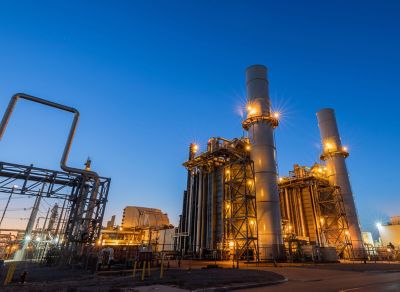A circular economy is based on the principles of reducing waste and pollution, keeping products and materials in use, and regenerating natural systems.
The current system is no longer effective for businesses, people or the environment. The current model is to take resources from the ground to make products that are often thrown away after we use them: take-make-waste. This is called a linear economy.
It’s imperative to transform the take-make-waste system, including how we manage resources, how we make and use products, and what we do with the materials afterward. Only then can we create a thriving circular economy that benefits everyone.
Shifting the system involves collaboration by businesses, governments, cities, NGOs and individuals. This will positively impact our products and even jobs. By designing products to minimize waste and pollution, recycling and reusing products and materials, and preserving our natural resources, we can build a truly circular economy.
Mechanical recycling, also known as traditional recycling, is the type of takeback recycling method commonly used in office buildings or homes where Resin Identification Code (RIC) 1 and RIC 2 plastics are put into recycling bins. The used plastics are typically sorted, cleaned, shredded, melted and then re-extruded into plastic pellets. These pellets are used in new plastic packaging and other products that are typically downcycled. Mechanical recycling degrades polymers over time, which means the plastic can no longer be recycled after a certain number of uses.
Here is an example. A water bottle cap can be mechanically recycled into a lipstick container. That lipstick container, if recycled, can be made into a pen, and the pen, if recycled, can be made into shoelace tips. At this point, the shoelace tips can’t be recycled again and often will end up in a landfill once the shoelaces are done being used.
This process is also commonly referred to as chemical or advanced recycling. At Eastman, we call it molecular recycling because our advanced circular recycling technologies — carbon renewal and polyester renewal — break down plastic waste to their molecular building blocks to be reassembled into new materials.
Many methods of chemical recycling exist and differ in terms of process, waste input, efficiency and environmental performance. Eastman’s molecular recycling technologies reduce greenhouse gas when compared to using fossil fuels and create recycled products that are indistinguishable from those made with nonrecycled content.
No. Mechanical and molecular recycling — the perfect duo — are complementary approaches with different inputs and outputs. They're both needed to advance a circular economy and meaningfully improve our environment, and each technology plays a vital role. Mechanical recycling is already widely used by many consumers as a proven model. Molecular recycling creates value from additional types of waste plastics, allowing them to be reprocessed an infinite number of times.
Eastman’s molecular recycling technologies can process most types of plastic — with the exception of PVC. That’s why mechanical and molecular recycling are the perfect duo for tackling the global plastic waste crisis.
Eastman’s molecular recycling allows us to return waste plastic from a wide variety of sources, including packaging, carpet fibers and textiles, to their molecular form an infinite number of times. With our polyester renewal technology and carbon renewal technology, we are helping create a truly circular economy.
Carbon renewal technology (CRT) is one of our molecular recycling technologies. CRT is a type of advanced recycling that gives new life to the most complex waste plastic. This process uses industrial, pre-consumer or post-consumer scrap (such as flexible packaging, plastic films, polyester carpet fibers and other mixed plastics) as feedstock — or input — and breaks it back down to its molecular building blocks, allowing the molecules to be reassembled to create new products.
The resulting material is indistinguishable from material made from fossil feedstocks and can be used in durables, packaging and textiles. This allows materials to be recycled an infinite number of times — unlike mechanical recycling — with no compromise or loss of quality. Not only will this keep materials out of the landfill and in use longer, but it also has a significantly lower carbon footprint than materials created using fossil fuels. Carbon renewal can reduce the greenhouse gas emissions for syngas production by 20% to 50%.
Polyester renewal technology (PRT) is our molecular recycling technology that processes hard-to-recycle polyester plastic waste. Polyester renewal allows us to divert a family of polyester waste plastic beyond clear water bottles — products such as colored bottles, carpet fibers and textiles — from the landfill. This technology unzips materials back to their original monomers through one of two processes — glycolysis or methanolysis, depending on the type of material being used to supply the process — to create new materials made with recycled content. This process, also known as depolymerization, allows us to recycle polyester waste over and over again without degradation over time and can reduce the average greenhouse gas emissions by 20%-30% when compared to processes using fossil fuels.
End of life (EOL) is the stage when a product or material reaches when it’s no longer of use. This could mean it’s destined for a landfill, compost or recycle bin, depending on how the user disposes of the material. At Eastman, we try to ensure materials have a good end of life and are recycled molecularly or mechanically into new materials rather than going to landfill or incineration or ending up in our environment or waterways.
Carbon renewal technology can process most types of plastic, including polyethylene terephthalate (packaging or clothing), polystyrene (packaging or insulation), polyethylene (packaging or films) and polypropylene (packaging, pipes, textiles and electronics like cell phones and electronic hardware). The exception is polyvinyl chloride (PVC).
Polyester renewal technology can use the family of polyethylene terephthalate or polyester plastic waste, such as clear plastic bottles, films, textiles and carpet.
Eastman’s purpose is to improve the quality of life in a material way, and our world has three very real challenges that could impact that quality of life: efficiently feeding and caring for a world that is quickly approaching 10 billion people, climate change and the plastic waste problem.
Much of the developing world has severely insufficient waste management systems, resulting in unmanaged dumps that are frequently emptied by typhoons and tsunamis. This causes plastic waste and other materials to enter our streams, rivers and oceans, which eventually gets into our marine life, into our foods and then into our bodies.
Our team is committed to eliminating material waste through innovation, creating processes that make the plastics and materials we need reusable and recyclable. We’re driving a materials revolution by using our molecular recycling technologies to keep materials in use and out of the landfill, and we’re reducing greenhouse gas emissions in the process.
One significant way we’re different is we’re at commercial scale. We’re recycling hard-to-recycle waste plastics now. This isn’t pilot scale or an announcement that we’re in the planning phase. We’re already taking action to reimagine a recycling system that contributes to a more sustainable future and helps build a circular economy in place of a linear one. Using our molecular recycling technologies, we can recycle almost any kind of plastic. Embracing the reduce/reuse/recycle concept is very real for us.
Mass balance is an accepted and certified protocol that documents and tracks recycled content through complex manufacturing systems. It's used when sustainable inputs like recycled plastic are mixed with traditional inputs like fossil-fuel based feedstock.
For example, Eastman uses both sources to make identical building blocks for their materials. Because they are identical, it’s impossible to trace exact molecules to end products. However, we can record how much recycled plastic has been used in manufacturing and balance it with the certified recycled content in end products.
Waste plastic is fed into Eastman’s molecular recycling technologies in place of fossil fuel feedstock.
That plastic is broken down into molecular building blocks that are fed into production systems, resulting in fewer molecules being purchased or produced from fossil fuels.
The quantity and identity of the recycled molecules are placed into an inventory that keeps a precise tally of how many of each molecule were recycled. (Remember, these molecules are indistinguishable from the building blocks produced with fossil feedstock.)
Because Eastman tracks the exact number of molecules required to produce each Eastman Renew product, the appropriate number of molecules is deducted from the inventory when the product is produced.
Based on mass balance standards, Eastman is not allowed to sell more Renew products than we’ve created from recycling waste plastic.
More waste plastic is then fed into the system to replenish the inventory.
Leading voices recognize that mass balance enables the circular economy today. It allows recycled plastics and conventional fossil raw materials to be processed together in existing, world-scale manufacturing systems.
Mass balance also allows brands to report, with certainty, the amount of recycled content allocated in products.
The alternative to mass balance is building separate and redundant infrastructure. To duplicate the many reactors, purification columns, storage tanks, polymerization lines, and packaging and distribution systems would take decades and result in tremendous environmental impact.
At its simplest, mass balance is an accepted and certified method to measure and track recycled inputs and outputs. And mass balance principles are used in a number of industries, including renewable energy.
In advanced recycling, mass balance traces, measures and reports the amount of recycled materials used to create a product. This method, certified by the ISCC, measures recycled inputs and outputs and allows brands to report the percentage of recycled content allocated to manufactured products. International Sustainability & Carbon Certification (ISCC) is an independent organization and leading certification system supporting sustainable, fully traceable supply chains.
Mass balance is third-party certified to the ISCC PLUS standard. Our partners use ISCC standards on an ongoing basis to ensure accuracy in the materials we use to make our products. Third-party certification provides transparency to track certified recycled content through critical points in the value chain. ISCC certification of mass balance allows brands to make claims with meaning.
Renewable energy uses a mass balance system to channel the energy produced from renewable sources to those who need it. Windmills and solar panels are strategically placed to use available, unlimited energy to generate renewable energy. Credits for renewable energy are allocated based on demand. This enables energy companies to invest in the assets that generate green energy (windmills and solar panels) rather than redundant transmission lines to satisfy antiquated definitions of “being sustainable.”
Similarly, mass balance conserves resources and reduces environmental impact by diverting plastic waste from landfills and oceans and then returning recovered materials to the production process for reuse. With advanced recycling, mass balance recycled inputs and outputs are both recorded, enabling verification of the percentage of recycled content in manufactured products.
We have a transformational corporate strategy for sustainability that leverages sustainable innovation to build A Better Circle — or a better planet. In alignment with our strategy, we established sustainability commitments for mainstreaming circularity, mitigating climate change and meeting the needs of a growing world. Through molecular recycling, we have committed to recycle 500 million pounds of plastic waste annually by 2030, and our goal is to reach net-zero operations by 2050. We invite you to review our goals on our sustainability website.
We would love to connect with you to talk about some opportunities. Please get in touch with us.
Molecular recycling is real at Eastman. We’re already producing materials at commercial scale with certified recycled content and products are on retail shelves.
We understand there are a lot of different perspectives on this issue. Opinions of some NGOs will never perfectly align with ours. That doesn’t mean we can’t find common ground, starting with the fact that we agree there is a climate crisis and a waste crisis — and at Eastman, we’re embracing our responsibility to help turn the tide on both.
We have measurable recycling goals, and we have a strategy to reduce waste and increase the reuse of materials. Our materials with recycled content are being used to create products that will be reused again and again. Molecular recycling is real, and we’re doing it — now.






